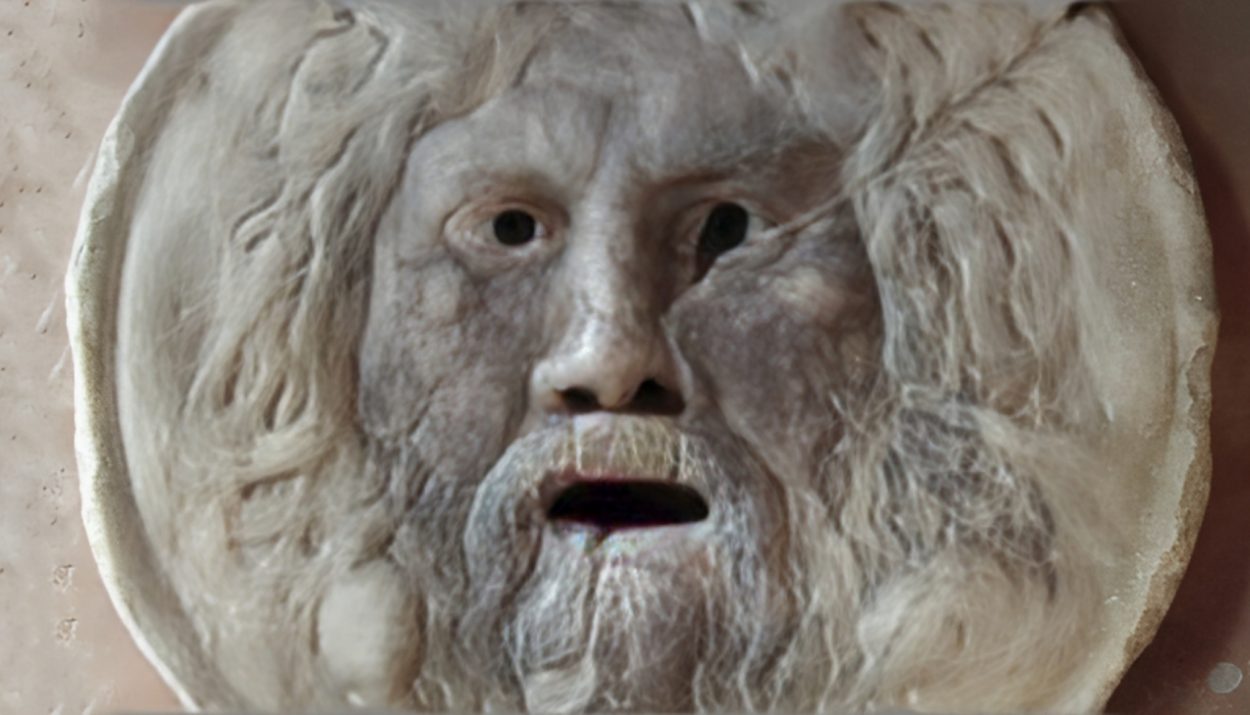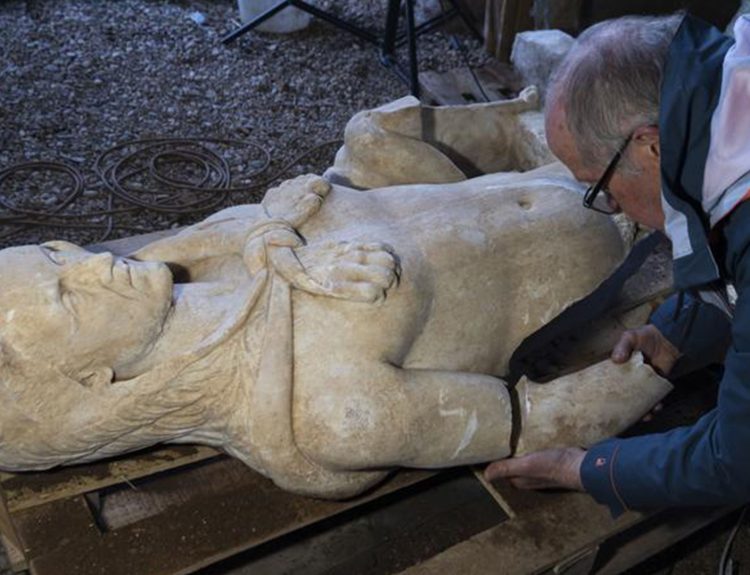In Rome, nestled against the weathered walls of the Santa Maria in Cosmedin church, lies a cryptic relic known as the “Bocca della Verita” or “Mouth of Truth.” This ancient marble visage, with its hollow eye sockets and open mouth, silently judges the thousands of tourists who seek validation by placing their hands inside its gaping maw. Legend has it that the Bocca della Verita punishes lies and dishonesty by biting off the fingers of the guilty, a ritual that has endured for over five centuries.
Whose Visage is Revealed in the Bocca della Verita?
The enigmatic “Mouth of Truth” continues to puzzle scholars, as its purpose and the identity of the stern, bearded face it portrays remain uncertain. This ancient, round, pagan sculpture weighs a whopping 1,300 kg (2,866 lbs.) and measures 20 cm (eight inches) thick and 175 cm (69 inches) in diameter. Despite its rich legends and mysterious aura, no one can definitively say why it was created or whose visage it represents.
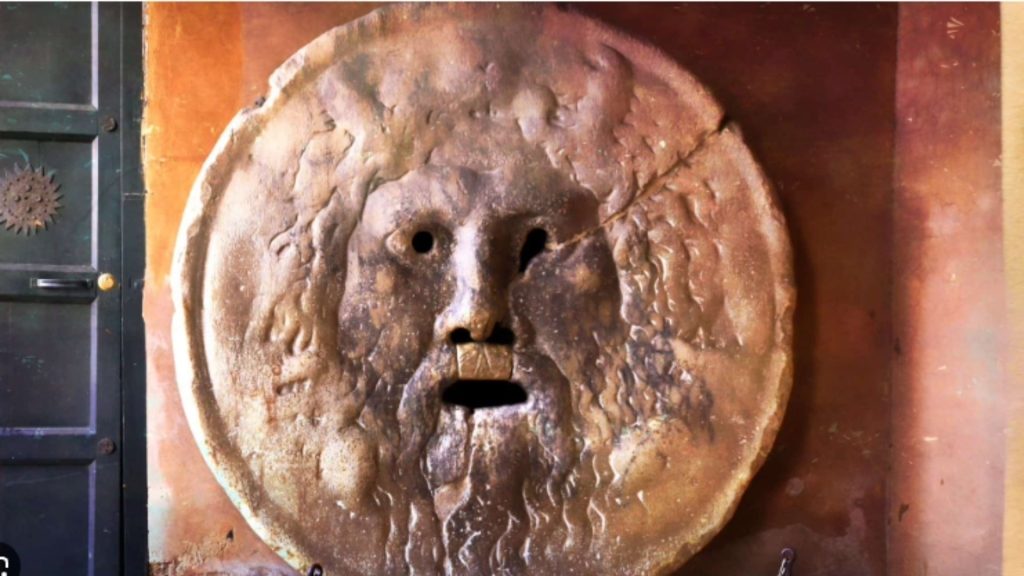
The engraved marble head prominently displays a pair of hollow eyes, two nostrils, and a wide-open mouth. Intriguingly, the features bear a striking resemblance to the horns of crabs or the pincers of a sea creature. Scholars widely believe that the face represents Oceanus, the Sea God, known for his crab-like horns. However, there are also theories suggesting that the face could belong to Triton, the god of Tiber, or perhaps Faun, the pagan deity associated with the forest.
The Fascinating Origins of the Bocca della Verita
The origin of the famous Bocca della Verita is believed to be rather humble, which may come as a surprise considering the legend it has become. Scholars speculate that it could have been a well-cover or part of a fountain in ancient Rome. Created around the first century CE, the shape, condition, and holes of the Bocca della Verita suggest that it may have originally served as a drain cover in the nearby Temple of Hercules Victor.
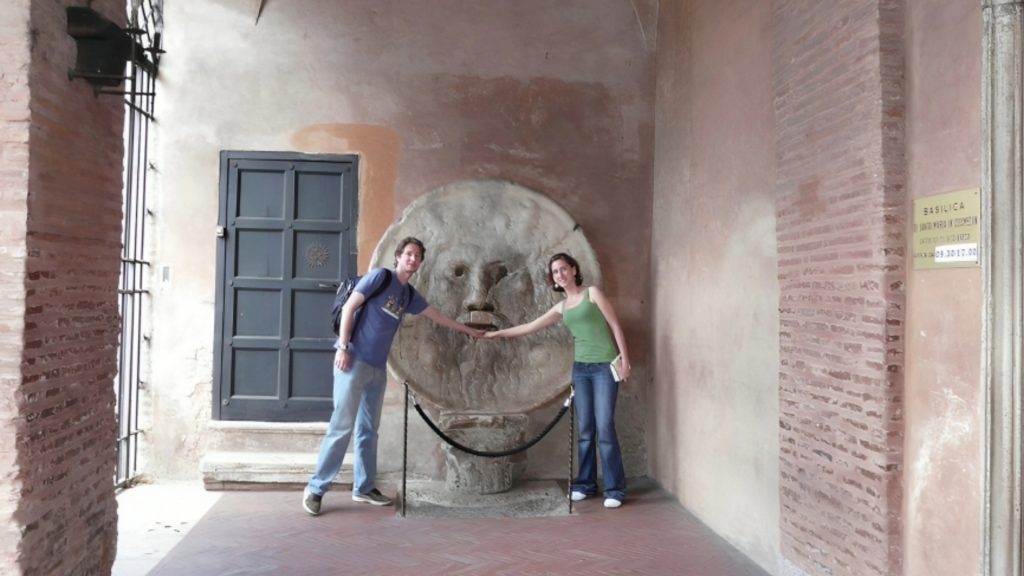
Historians speculate that the mysterious object in question could have been a drain cover for the Cloaca Maxima, an ancient Roman sewer that still exists today. This massive sewer system, which empties into the Tiber River, would have required a sturdy cover to regulate the flow of water. Some experts suggest that the face depicted on the cover could be that of God Oceanus, the sea god, serving as a guardian overseeing the rushing waters as they make their way through the city’s drainage system.
The Legend of the Bocca della Verita: Unveiling the Mystery
The true origin of the Bocca della Verita remains a mystery, with scholars unable to definitively trace its roots. Even the identity of the pagan god it resembles is a subject of debate. However, one thing that all experts agree on is the enduring fable that surrounds this marble face. According to urban legend, inserting your hand into its mouth and telling a lie puts you at risk of losing your hand or even limbs.
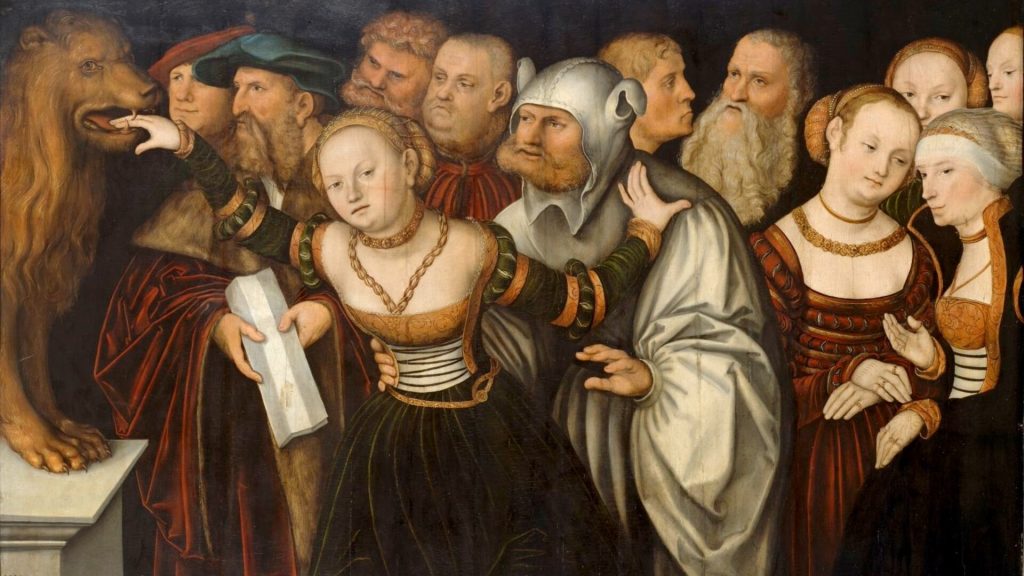
During the Middle Ages, Rome was a hub of tribunals, executions, and witch trials. Those accused or suspected of crimes would face a gruesome punishment if found guilty – having their hands chopped off. This barbaric practice was prevalent during that time.
Deep History
In the 1450s, the first mention of Bocca della Verita as a lie detector emerged, sparking its rise in popularity. An intriguing legend from the 15th century tells the story of a nobleman who suspected his wife of being unfaithful. To prove her innocence, they stood before the “Mouth of Truth.” Craftily, the wife’s lover disguised himself as a madman and embraced her when she placed her hand in the mouth. She truthfully claimed that only her husband and the madman had ever touched her, cleverly escaping judgment. Her husband, satisfied with her innocence, let her go free.
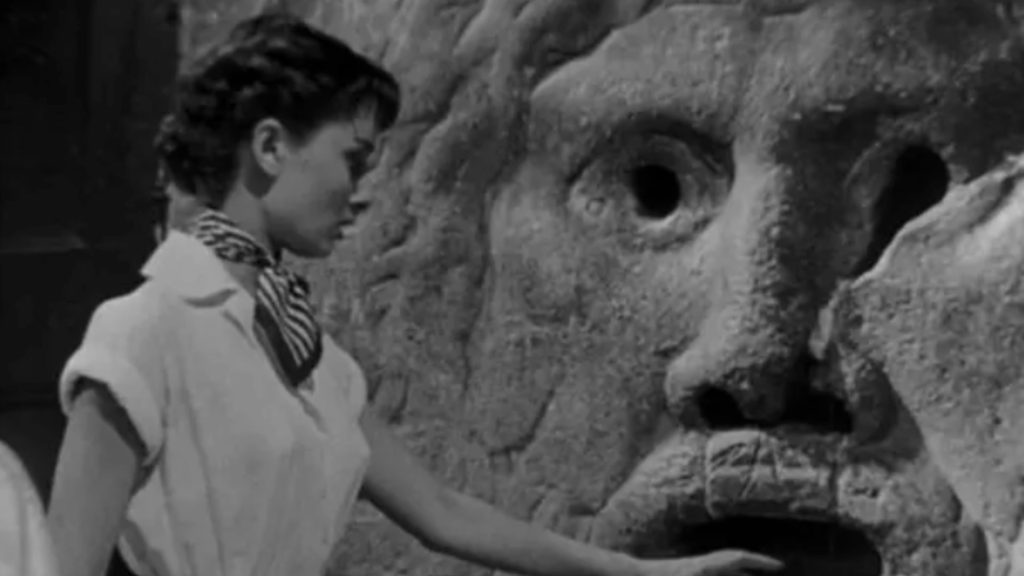
A famous painting by Lucas Cranach the Elder, a Renaissance German painter, includes a reference to the legend. Painted between 1525 and 1530, this artwork has captivated audiences for centuries. Richard Carlton Jones, head of scholarship, research, and cataloging, provides this timeframe. Despite the passage of time, the truth behind the legend remains uncertain. Its enduring popularity speaks to its timeless appeal.
Is the Legend of the Bocca della Verita True?
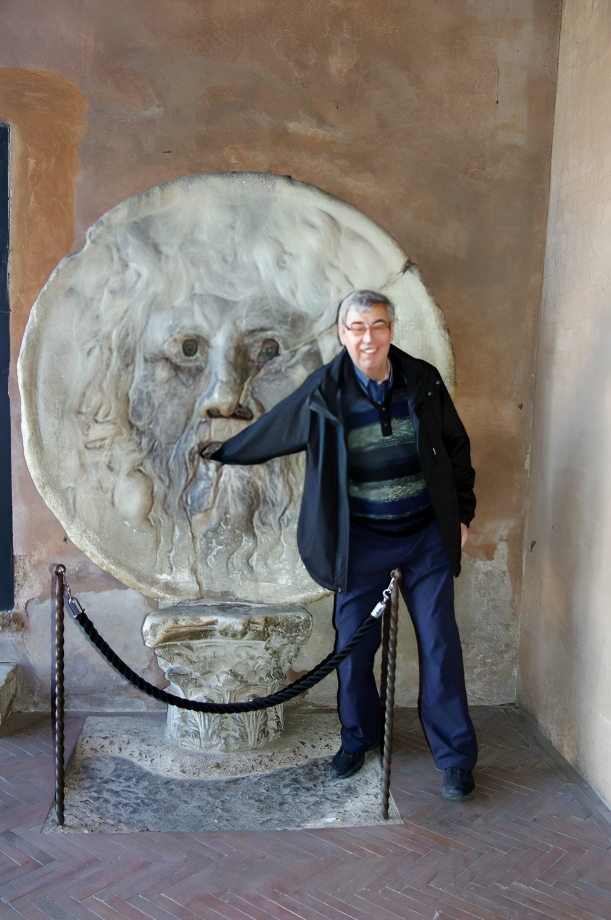
For over five centuries, the legend of the mask as a truth-deciding entity has captivated the imagination of many. But is this tale merely a product of urban folklore? The enigmatic allure of the grand marble visage, with its hollow eyes, nose, and gaping mouth, played a significant role in popularizing the story within a culture deeply fascinated by pagan deities, superstitions, and clandestine schemes.
Throughout history, there are clues that suggest a different perspective on the famous marble face. It is possible that the mask served a darker purpose. Legend has it that if a person on trial was already deemed guilty by authorities, hidden officers behind the mask would be armed and ready to administer punishment. The shocked crowd would witness this deception and help spread the story, ultimately contributing to the mask’s fame and significance in Rome.
The Growing Popularity of Bocca della Verita
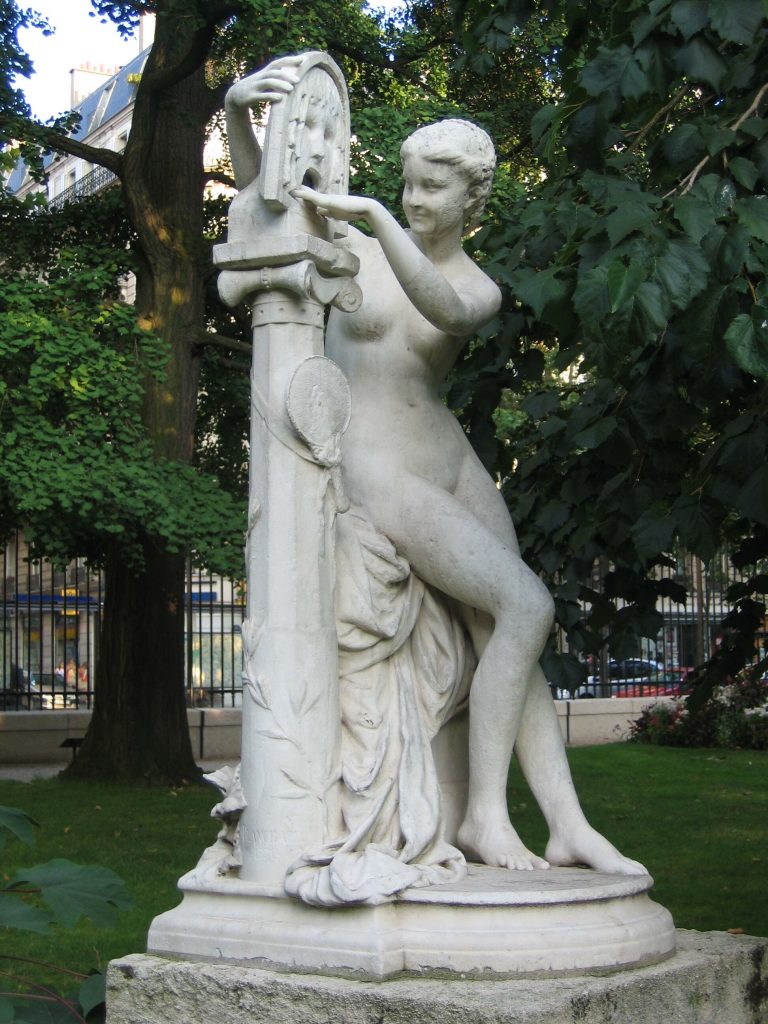
The Bocca della Verita gained fame for its association with uncovering deception. Its intriguing history and connection to violence have made it a timeless formula for success in literature, art, and movies. One iconic moment from the film Roman Holiday features Gregory Peck playfully tricking Audrey Hepburn in front of the Bocca della Verita.
What Does It Mean In Todays World
References and adaptations of the famous marble statue have multiplied over time. Now, a life-sized replica can be found at Alta Vista Gardens in California. In addition, the Luxembourg Gardens in Paris features a sculpture of a woman with her hand inside the “Mouth of Truth.” Cruder reproductions and fortune-telling machines have also appeared in museums, such as the one at Musee Mecanique in San Francisco.
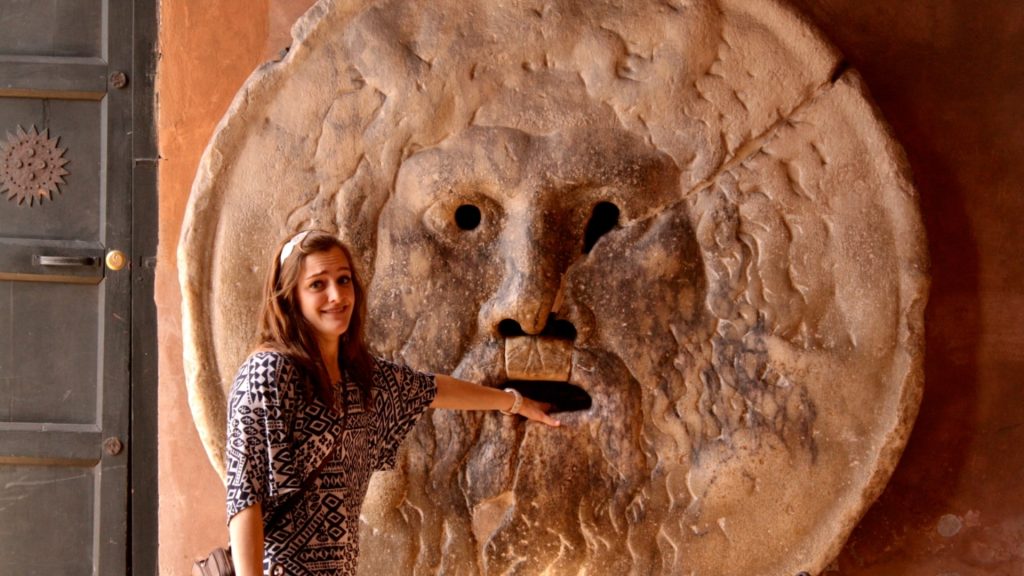
In today’s world of commercialization and selfie obsession, the Bocca della Verita has lost its charm and mystique. The church now charges tourists for the privilege of seeing this marble face and taking a photo with it. The authority and reverence it once held have diminished, and it now solemnly gazes at countless tourists, perhaps sighing as it poses for yet another selfie with yet another skeptic of our modern age.

